#aircraft hangars
Text
Why Metal Aircraft Hangars Are Worth the Investment | Coastal Steel Structure

Choosing steel for Aircraft Hangars is also a cost-conscious decision. Although the initial pricing of Steel Buildings may be the same or slightly more than other building material choices, the longevity and durability of steel more than make up any cost difference. Steel structures require minimal preventative maintenance to ensure they last. This also equates to less money spent on repairs and replacements or building something brand new.
See More: https://coastalsteelstructures.com/why-metal-aircraft-hangars-are-worth-the-investment-infographic/
0 notes
Text
The Intersection of Marine Service and Air Cargo is Revolutionizing Logistics

Introduction:
The effective movement of commodities across great distances has long been a priority in the dynamic world of logistics. The marine industry has long been an important actor in global trade, while air freight has grown in popularity due to its speed and dependability. However, the merger of these two businesses has created new opportunities for seamless transportation. In this blog post, we'll look at the symbiotic link between marine service and air cargo, emphasizing the importance of aircraft hangars, air cargo tracking, aircraft engines, cargo ships, and satellite phones in transforming the logistics landscape.
Aircraft Hangars Improve Air Cargo Operations
Aircraft hangars are critical pieces of infrastructure for air cargo operations. These massive structures provide cargo aircraft with cover, maintenance, and repair facilities. Aircraft hangars facilitate the efficient flow of products by preserving the structural integrity of planes and protecting them from harsh weather conditions. These hangars, with their innovative technology and roomy interiors, contribute to faster turnaround times and improved cargo capacity, improving the overall effectiveness of air cargo operations.
Transparency and Security in Air Cargo Tracking
In the logistics business, real-time tracking of aviation freight has become critical. It enables shippers, consignees, and logistics providers to track the location and condition of items throughout the shipping process. Stakeholders can properly forecast delivery schedules, prevent theft or tampering, and solve any operational difficulties that may develop by integrating tracking technology like as GPS and RFID. Air cargo tracking improves openness while also ensuring the safety of valuable and time-sensitive shipments.
The Logistics Ecosystem is Powered by Aircraft Engines
Cargo airplane engines play an important part in the logistics ecosystem. These strong devices provide the push required to move huge objects quickly and efficiently. Constant advances in aviation engine technology have resulted in improved fuel efficiency, lower emissions, and longer flight ranges. Longer flights, shorter delivery times, and improved operational flexibility have all been made possible by the development of more reliable and high-performance engines.
Cargo Ships: The Maritime Trade's Backbone
While air freight provides speed, the maritime industry remains the backbone of global trade due to its ability to handle large amounts of products. Cargo ships transport a diverse range of goods across the world's oceans, providing cost-effective and dependable transportation options. These ships are built to carry a wide range of cargo, including bulk commodities, containerized items, and large packages. Cargo ships supplement air cargo services by utilizing the extensive network of ports and waterways, allowing for seamless multimodal transportation.
Satellite Phones: Communicating in Remote Locations
Communication is critical for coordination, safety, and efficiency in marine and air freight operations. Many places, however, lack dependable terrestrial communication infrastructure. Satellite phones become crucial instruments in such situations for keeping ongoing connectivity. Crew members, logistics operators, and other stakeholders can communicate regardless of their location, ensuring seamless coordination, emergency response, and operational efficiency, especially in remote places or during transoceanic flights.
Conclusion:
The seamless integration of maritime and air cargo services has transformed the logistics business, boosting global trade to new heights. Aircraft hangars, air freight tracking, aircraft engines, cargo ships, and satellite phones are all essential parts of this transformational process. Logistics providers may optimize transportation routes, improve delivery times, and increase customer satisfaction by harnessing the assets of both industries. As technology advances, we may expect further innovations that will revolutionize how things are delivered around the world, resulting in a more connected and efficient logistics ecosystem.
#Marine service#air cargo#aircraft hangars#maritime#cargo aircraft#Air cargo tracking#Aircraft engine#Cargo ship#satellite phone
0 notes
Text
The Intersection of Marine Service and Air Cargo: Promoting Aviation Sustainability

The global transportation business is experiencing a peaceful combination between marine service and air freight, resulting in a seamless movement of commodities across continents. This blog examines the vital role of marine and cargo aircraft in the logistics industry, highlighting the growing importance of sustainability through the use of aircraft hangars and sustainable aviation fuel.
Maritime Transportation: The Backbone of Global Trade: Maritime transportation has long been the backbone of global trade, allowing products to flow across oceans and connecting countries. Marine service, with its broad network of ports and shipping lines, provides unrivalled dependability and cost-effectiveness. However, the maritime sector confronts constraints in terms of speed and access to isolated places. This is where air freight comes in to bridge the gap and speed up the transportation process, ensuring timely delivery to even the most remote corners of the globe.
Air Cargo: Improving Global Connectivity:
Air Cargo planes play an important role in the logistics business by allowing for speedy worldwide connectivity. These specialty planes are meant to transport enormous amounts of freight in a timely way, ranging from perishable commodities to industrial equipment. Businesses may improve their supply chains and respond quickly to market needs by harnessing the speed and flexibility of air freight. Furthermore, cargo planes serve as a key lifeline during humanitarian disasters, bringing critical supplies to afflicted areas as soon as possible.
Ensuring Operational Efficiency in Aircraft Hangars:
Aircraft hangars are critical airport infrastructure components that serve as cargo plane maintenance and storage facilities. By providing secure and controlled settings for aircraft maintenance, repair, and storage, these facilities improve the operational efficiency of air freight operations. Airlines and logistics firms may streamline their operations, reduce downtime, and improve safety standards with suitable hangar facilities. Furthermore, modern hangars have eco-friendly designs that include energy-efficient technology and materials to lessen environmental impact.
A Step Towards Greener Skies: Sustainable Aviation Fuel:
As the world recognizes the critical need to address climate change, the aviation industry is aggressively looking for ways to minimize its carbon impact. The creation and use of sustainable aviation fuel (SAF) is one key breakthrough. SAF is made from renewable sources such as plant-based feedstocks and waste materials, making it a more environmentally friendly alternative to regular jet fuel. The aviation industry may dramatically cut greenhouse gas emissions by replacing fossil fuel with SAF, so contributing to global sustainability goals. Furthermore, SAF is a practical and scalable solution for greener skies because it can be employed in existing aircraft engines without requiring major modifications.
Conclusion: The partnership of marine service and air cargo has transformed the global logistics business, enabling seamless trade and efficient products transportation. By implementing sustainable practices like as using aircraft hangars and using sustainable aviation fuel, the aviation sector may improve its environmental stewardship and reduce the environmental impact of air freight operations. We can build a more sustainable and linked world if we work together.
0 notes
Text

Flugplatz Rangsdorf, Brandenburg, Germany
#photography#architecture#urban exploration#urbex#airfield#military#architecture photography#aircraft hangar#red army#ddr#forgotten places#lost places#decay#derelict#abandoned places#abandoned#brandenburg#urbex germany#germany#east germany#urban explorers#urban photography#urban#urban decay#industrial#industrial photography#urbexdecay#urbexphotography#urbexplaces#urbexworld
186 notes
·
View notes
Text
F-14 FUN FACT OF THE DAY #37
A typical Naval F-14 Tomcat squadron could contain anywhere from 12-14 jets. Squadrons deploy on aircraft carriers with their Carrier Air Wing (CVW), which typically consist of four fighter aircraft squadrons out of a total of eight or so aircraft squadrons. It may have been four F-14 Tomcat squadrons or a mix of F/A-18 squadrons as well.
In F-14 squadrons, the aircraft could typically be characterized into one of a handful of categories:
2-3 jets would be in fantastic condition, capable of out-accelerating most of the aircraft, had better systems and radars and overall just flew better than all of the rest. The favorites to fly by the aircrews.
1-2 jets would be “hangar queens,” aircraft that were constantly down for maintenance and essentially lived in the hanger.
1-2 jets that were ‘bent’, they would “trim up well and just didn’t fly very well compared to the other jets.” So not quite hangar queens, just not fun to fly.
And
The rest, somewhere in between
#FFFOTD#F-14 Fun Fact of the Day#hangar queens: another way you can hurt your favorite characters#F-14 Tomcat#F-14#Squadrons#aircraft carrier#fact#reference#info#SOURCE: Brian Kocher#information
25 notes
·
View notes
Text
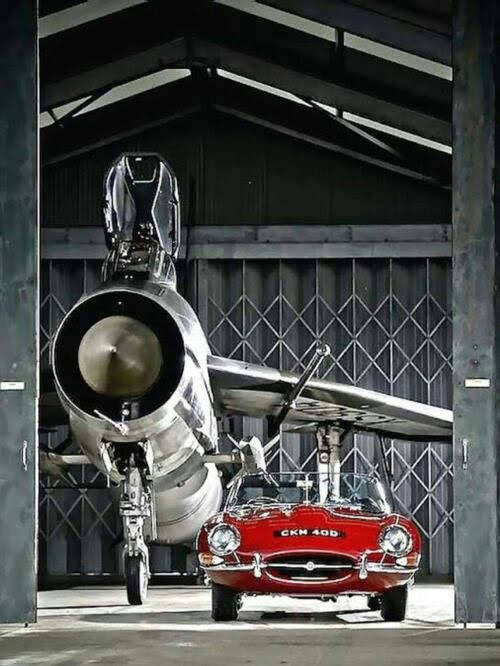
★彡𝓛𝓓ミ★
17 notes
·
View notes
Text

Vought F4U-4 „Corsair“ - Hangar 7 Salzburg
#canon#original photographers#photographers on tumblr#original photography#photography#black and white#black and white photography#austria#salzburg#hangar 7#corsair#aircraft#airport
16 notes
·
View notes
Photo

Hangin out
119 notes
·
View notes
Text
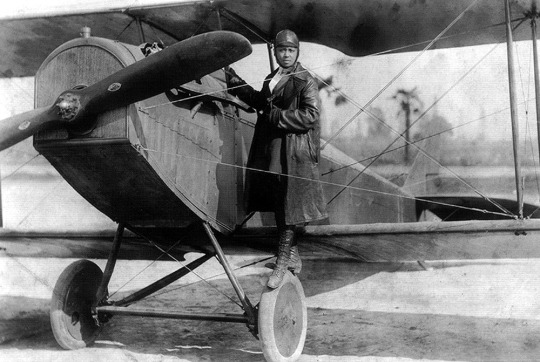

TIL about Elizabeth "Bessie" Coleman, a badass aviation pioneer who was the first Black and Native American woman to obtain a pilot's licence. Not sure if the Americans of Tumblr already know about her, but as a Brit I unfortunately did not until now, so I wanted to share her story here! (Image IDs in alt text.)
Born in Texas on January 26, 1892, Bessie was the tenth of thirteen children in a family of sharecroppers. From the age of six, she attended a small, segregated school, where she excelled as a student and eventually won a scholarship to the Missionary Baptist Church School aged 12. When she turned 18, she moved to Langston, Oklahoma to study at the Oklahoma Colored Agricultural and Normal University, but had to drop out after one semester due to financial difficulties and returned to work at the acorn fields back home.
When she was 24, Bessie moved to Chicago, Illinois and worked as a manicurist in a barber shop, where she discovered her passion for aviation after hearing the stories of some of the clients, who had been pilots during World War One. She then decided to become a pilot herself, taking on a second job to save up for flight school. However, no flight schools in the US would admit Black or women students, so another of the barber shop's clients, Robert Abbott - a Black philanthropist and publisher of the Chicago Defender newspaper - suggested that she move to France and learn to fly there. He and Jesse Binga, another Black philanthropist and banker, gave her the financial support to do this, so in November 1920, Bessie set off for France to begin her training.
On June 15, 1921, Bessie Coleman was awarded an international pilot's licence by the Fédération Aéronautique Internationale, becoming both the first Black woman and the first American to do so. Following this, she returned to the US, but found it difficult to make a living as a pilot, as commercial flight did not yet exist - her only option was to become a stunt (aerobatic) pilot. Once again, the US's racism and misogyny prevented her from receiving stunt training there, so in 1922 she went back to France, and by September that year was back home again for her first stunt flight. On September 3, Labor Day, she became the first Black woman to stage a public flight in the US, flying at a show sponsored by the Chicago Defender and held in honour of the veterans of the all-Black 369th Infantry Regiment of WWI.
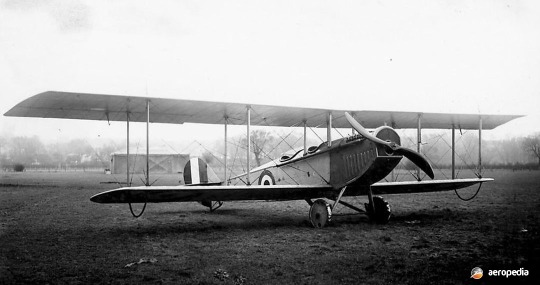
Bessie soon became a media sensation, earning herself the nickname "Queen Bess" and performing at air shows across the US and Europe in a Curtiss JN-4 "Jenny" biplane (example pictured above). She refused to fly at any shows that did not permit Black people to attend, and went on speaking tours at schools and churches to encourage fellow Black aspiring aviators to take to the skies. Her dream was to open a flight school to train Black pilots, and she tirelessly raised money for this with her shows.
Sadly, on April 30, 1926, while flying with her mechanic William D. Wills, Bessie's plane unexpectedly went out of control and dove into the ground, killing both of them. An investigation revealed that this had been caused by a wrench that had been accidentally left in the plane and had jammed its controls. It was a devastating loss, and her funeral, which was held in Chicago and led by Ida B. Wells, was attended by around 10,000 people. In 1929, the Bessie Coleman Aero Club was founded to continue her work promoting Black participation in aviation, and to this day there are several scholarships in her name aimed at high school students interested in careers in aviation.
"I knew we had no aviators, so I thought it my duty to risk my life to learn." - Bessie Coleman
Fly high, Queen Bess, blue skies forever! 🛩💙
#aviation#aviation history#black history#bessie coleman#planeposting#my writing#long post#planes ily#the only source not linked here (for the quote at the end) is The Aircraft Book by DK cos i have the physical copy#but that's where i first heard of her and i got genuinely emotional okay#as the only mixed/black + queer person who went through the atc recruitment process i just went thru i felt 1000% like the odd one out#it felt like the odds were very much stacked against me#but that's what it's like for us (in white majority countries anyway) so if i have to be my own sort of pioneer then so be it#we belong in aviation PERIOD#in the cockpit or the tower or the TRACON or the hangar or on the ground at the airport or anywhere else#we have always been here#and we will always be here#and we can fucking do it!!!!#sorry for any mistakes or shit writing i have covid rn dkljfklfslkja
10 notes
·
View notes
Video
Vietnam War 1966 - Fighter Jet-Final Flight by manhhai
Via Flickr:
FILE - In this April 23, 1966 file photo a U.S. Air Force F-4 Phantom jet is guided out of its revetment in Da Nang formerly South Vietnam, at the start of a bombing mission over the DMZ area and North Vietnam. The last of thousands of F-4 Phantom jets that have been a workhorse for the U.S. military over five decades are being put to pasture to serve as ground targets for strikes by newer aircraft. (AP Photo, File)
#Air#Force#Aircraft#Airplane#Fighter#hangar#Military#ready#for#takeoff#U.S.#troops#Vietnam#war#Da Nang#VNM#flickr
19 notes
·
View notes
Text
One of the museum volunteers I've been working with on the museum's display planes asked me if I'd to come over to this big hangar across the airport to help him remove the battery boxes "from a really neat airplane." He didn't specify, just said it's a surprise and when I got there I met this MiG 23 that's tucked away in this hangar.
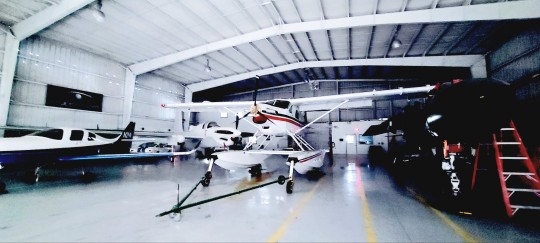
This hangar has so much to look at for real
From the turbine Beaver on floats, the custom Glassair,
or the turbine powered 100 ft wingspan glider called a Grobe. Imo is equally, if not cooler than the MiG. It can reach an altitude of 59000 ft! I bet the views from that aircraft are indescribable 🤩🥰

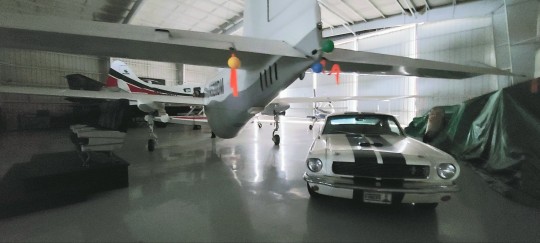


Also not me gushing more over the itty bitty Powerglide red orange lookin tug more than the jet >w>
I'll try to get more pics (of the tug of course 😌💕) when they fire the MiG up later in the week. >w>
17 notes
·
View notes
Text
Using Marine Services and Air Cargo to Simplify Global Trade and Transportation
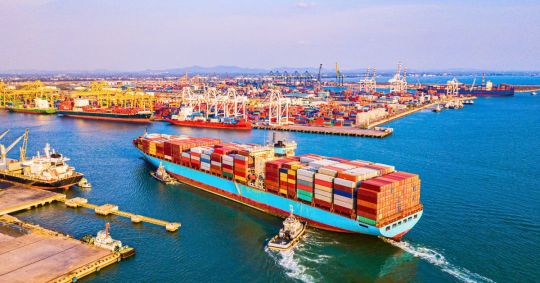
Introduction:
The efficient flow of goods is critical for businesses and economies to prosper in today's linked world. The combination of maritime and air cargo services is critical to enabling smooth worldwide trade and transportation. The maritime and aviation sectors are reinventing logistics with specialized infrastructure such as aircraft hangars and cargo ships, as well as innovative technologies such as air cargo tracking and satellite phones. In this blog article, we will look at how these critical factors help to ensure the seamless operation of the supply chain and the timely delivery of goods across continents.
Marine Services: The Backbone of Global Trade: Marine services are the backbone of international trade, allowing items to be transported over long distances. Cargo ships, outfitted with cutting-edge technology, cruise the world's waters, transporting a variety of products ranging from raw materials to finished commodities. These vessels have a big capacity, allowing them to transport vast amounts of goods. Furthermore, technological developments and the implementation of environmentally friendly practices have made maritime transportation more sustainable. Efficient cargo handling, secure storage, and attention to international rules make shipping goods by water a dependable and cost-effective alternative for multinational firms.
Air Cargo: Quick and Timely Deliveries:
While the maritime business excels at moving big freight, the aircraft industry excels at making quick and time-sensitive deliveries. Cargo aircraft, with their large cargo capacity and advanced cargo handling technologies, ensure the timely delivery of commodities to remote regions. The ability to quickly reach any part of the globe has made air freight an essential component of global supply networks. Air cargo tracking systems provide real-time information on the location and status of the products being transported, allowing shipments to be tracked in real time. This transparency enables organizations to properly plan and manage their inventory, reducing delays and streamlining operations.
Safety and Maintenance in Aircraft Hangars:
Behind the scenes, aircraft hangars serve a critical role in ensuring the efficiency and safety of the air cargo business. These large buildings provide a safe atmosphere for inspecting, repairing, and maintaining airplanes. Hangars provide the infrastructure and tools needed to assure the airworthiness of cargo planes, from routine inspections to significant overhauls. Hangars contribute to the reliability and durability of aircraft engines by assuring timely maintenance and adhering to strict safety regulations, hence improving the safety and efficiency of air cargo operations.
Maritime and Air Cargo Collaboration:
The merger of maritime and air cargo services is a potent combination that maximizes worldwide trade and transportation efficiency. Many firms make use of both forms of transportation to maximize on their respective advantages. Cargo ships, for example, are frequently employed for bulk shipments, whereas air cargo is chosen for time-sensitive deliveries. This collaboration allows firms to meet a wide range of client requests, optimize inventory management, and cut transportation expenses. Through strategic cooperation, the maritime and aviation industries provide a holistic solution that addresses the supply chain's diverse needs.
Conclusion: In the ever-changing global commerce scene, marine services and air cargo continue to redefine commodities transportation. Businesses can rely on efficient, safe, and timely delivery of their products across the globe with specialized infrastructure such as aircraft hangars and cargo ships, as well as advanced technologies such as air cargo tracking and satellite phones, contributing to the growth and prosperity of economies worldwide.
#Marine service#air cargo#aircraft hangars#maritime#cargo aircraft#Air cargo tracking#Aircraft engine#Cargo ship#satellite phone
0 notes
Text
Increasing Efficiency in Global Logistics Through Marine Services and Air Cargo

Introduction:
In today's interconnected world, efficient transportation and logistics are critical to the smooth operation of economies and enterprises around the world. Marine services and air cargo are two critical components of this worldwide supply chain. Both of these industries are critical to the timely and safe transportation of products and materials across continents. In this blog post, we will look at the relevance of marine services, the benefits of air cargo, the significance of aircraft hangars, and how these elements contribute to the maritime industry's safe ship moving service.
Marine Services: The Foundation of Global Trade
For decades, marine services have formed the backbone of global trade, supporting the movement of products across great distances. With maritime routes carrying over 90% of global trade, the importance of marine transportation cannot be emphasized. Ships are a vital aspect of the global supply chain because they are the major way of carrying goods, commodities, and raw materials such as oil, gas, and minerals.
Port operations, vessel management, cargo handling, and ship repair are all examples of marine services. These services guarantee that ports run smoothly, that cargo are loaded and unloaded efficiently, and that ships pass safely. Marine service companies continuously improve their operations to suit the increasing needs of global trade by harnessing new technologies and implementing sustainable practices.
Benefits of Air Cargo:
While marine services excel in transporting vast quantities of commodities, air freight provides unrivaled speed and efficiency. Air transportation is great for time-critical shipments, perishable goods, and valuable things. When compared to other modes of transportation, the utilization of cargo planes allows items to arrive at their destination in a matter of hours or days.
Air cargo services offer a number of benefits, including speedier delivery, lower inventory costs, and enhanced supply chain visibility. Furthermore, because it is not constrained by geographical limitations or infrastructural limits, air transportation offers for greater routing freedom. This adaptability helps enterprises to reach global markets more efficiently and respond to customer requests more quickly.
The Value of Aircraft Hangars:
Aircraft hangars are critical to the smooth operation of air cargo services. These structures house aircraft storage, maintenance, and repair facilities. Properly equipped hangars are critical for preserving cargo plane integrity and guaranteeing optimal performance.
Aircraft hangars are built to accommodate a wide range of aircraft sizes, allowing for efficient parking, loading, and unloading. They also have maintenance facilities where professional personnel perform routine inspections, repairs, and improvements. These services are critical for ensuring cargo planes' airworthiness and safety, eventually protecting the expensive cargo they transport.
Safe Ship Moving Company:
The maritime sector is strongly reliant on ships moving safely and efficiently. Safe Ship moving services are provided by specialized marine service providers, who ensure that boats are transferred securely from one site to another. These organizations have the knowledge, equipment, and technology to tackle the challenges of ship shifting.
Safe ship moving companies employ professional personnel that methodically plan and execute every part of the operation, including route selection, cargo security, and compliance with international maritime standards. They eliminate risks and ensure the safe transit of vessels across oceans by leveraging their experience and modern procedures.
Conclusion:
Marine and air freight services are critical components of the worldwide logistics network. While maritime transportation continues to be the backbone of global trade, air freight supplements it by providing speed, flexibility, and efficiency. The provision of well-equipped aircraft hangars provides adequate cargo plane maintenance, which contributes to the smooth functioning of air freight services.
Furthermore, the safe ship moving service provided by specialized marine service providers assures the safe transfer of boats, which is critical in the maritime business.
0 notes
Text
If I was a highly placed corrupt official in the US Air Force I imagine I'd have a lot of fun spinning rumours so that all my colleagues think my department is secretly reverse engineering an alien spaceship when I'm actually just embezzling millions to pay a few dozen findommes to talk to me at unsociable hours.
4 notes
·
View notes
Text
so sorry for the people here who wish for another fic for my 'weathers family farm' series/are wondering if I'm dead. finals may have killed my spirit but mostly my writers block is being caused by my brain being taken over by my OCs. they're not even paying rent (letting me write about them in a publishable way)
#mine#im trying to finish this one fic but its fighting me the whole damn way#it might be a while honestly#i think finals took more out of me than i realised#if i trusted my longfic skills more i would write about them but unfortunately the longest ill go is maybe 3 or 4 chapters#me and long plots dont work out very well#and for some reason the story i do have is setting itself up in my head more like a tv series?? than a fic??#which is weird for me cause usually if i think about scenes over and over ill stop thinking about them visually#and start thinking about them in terms of how i would write the scene right?#but this one is trying to be a tv series#like ive imagined a trailer for it and everything#ive written some scenes but most of them are backstory for a side character and not like the main plot :/#big sigh#anyways this isnt about my main OCs per se but i saw a picture the other day of the Stargazer (my beloved)#and ive been wondering how the stargazer would fit in WOC#and my brain latched onto the idea that they were the first/one of the first commercial aircraft to get a doctorate#bc my main oc storyline takes place in college#bc thats the sisyphean hell im putting myself thru so i need my characters to suffer with me#oh yeah im also trying to pack. like all my stuff. so thats also going on in the background of all this#im literally sitting on the floor rn surrounded by coat hangars after giving up trying to shove them in an ikea bag#heem heem. whimper even.
2 notes
·
View notes
Text
2 notes
·
View notes